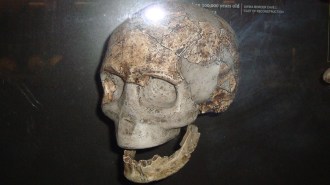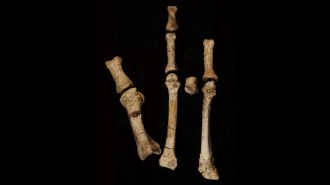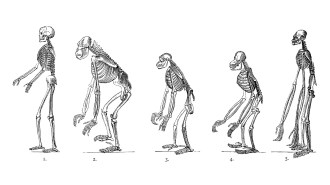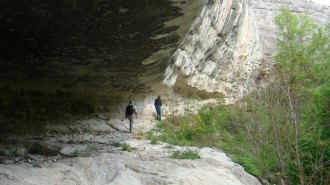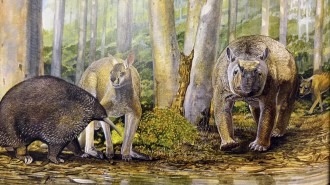Variety spices up Neandertals’ DNA
A surprising amount of genetic diversity characterized Neandertals, the Stone Age species with a disputed place in human evolution, a research team reports. The new finding stems from a small piece of DNA recovered from a 100,000-year-old Neandertal tooth previously found at the Scladina cave in Belgium.
Until now, DNA has been retrieved from Neandertal fossils dating to no more than 42,000 years ago (SN: 5/17/03, p. 307: Stone Age Genetics: Ancient DNA enters humanity’s heritage).
Catherine Hänni of École Normale Supérieure in Lyon, France, and her colleagues compared the chemical sequence of the 100,000-year-old Neandertal DNA with sequences previously extracted from later Neandertal specimens as well as with corresponding sections of DNA from people today. In all cases, the genetic material came from mitochondria, energy-producing cell structures, rather than from a cell’s nucleus.
DNA from Scladina differs in some ways from that of later Neandertals, a sign that genetic diversity diminished over time, the researchers conclude in the June 6 Current Biology. The Neandertal sequences exhibit chemical arrangements not observed in people, supporting the theory that Neandertals produced no or few offspring with our ancient forerunners, they say.
Still, such findings don’t settle the debate over whether Neandertals interbred with Stone Age Homo sapiens (SN: 3/20/04, p. 181: Available to subscribers at Prehistoric Family Split: DNA puts Neandertals on edge of human ancestry).


